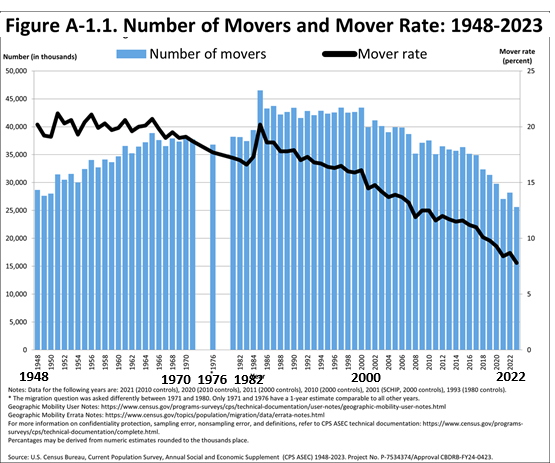It seems to me the real American Dream is not measured solely by money, it’s more a measure of the freedom to Start Over.
The conventional definition of The American Dream is anyone can achieve middle-class security if they work hard, work smart, persevere and are frugal / prudent / save and invest a healthy chunk of their earnings.
I don’t consider it demeaning to call this ordinary success: the whole point of The American Dream is that ordinary people can achieve middle-class security through their own efforts.
For some, The American Dream is to achieve extraordinary success of the sort reserved for the few: fame and fortune.
What struck me about the early 1800s was the great mobility of the non-slave populace in an era where roads were mostly muddy tracks and travel was slow and arduous. Americans were constantly on the move seeking better opportunities elsewhere, buying and selling farmland, starting home-based enterprises, finding a different employer or kind of work and so on, often far from their previous home base.
Being on the make / entrepreneurial was part and parcel of American culture, and this has continued in varying ways to the present.
European visitors to America in the early 1800s commented on how every conversation soon turned to making money. Though Charles Dickens observed many positive traits in American culture, he also noted this obsession with obtaining material wealth:
“All their cares, hopes, joys, affections, virtues, and associations, seemed to be melted down into dollars.”
“Men were weighed by their dollars, measures gauged by their dollars; life was auctioneered, appraised, put up, and knocked down for its dollars.”
This latter quote expresses the reductionist quality of the conventional conception of The American Dream: how to make more money?
There is of course an element of human nature in this desire, which Alexis de Tocqueville described: “Consider any individual at any period of his life, and you will always find him preoccupied with fresh plans to increase his comfort.” How do we increase our comfort? By making more money.
But de Tocqueville too observed Americans’ obsession with increasing their material wealth:
“As one digs deeper into the national character of the Americans, one sees that they have sought the value of everything in this world only in the answer to this single question: how much money will it bring in?”
Herman Melville’s under-appreciated 1857 novel The Confidence-Man explores the porous border between entrepreneurial endeavors and perpetrating a con.
I explored this fascinating portrayal of Americans on the make in a blog post: The Con in Confidence (October 4, 2006).
Mobility is not just of value to the individual conception of The American Dream, it’s also a key dynamic in the economy, which depends on the mobility of the workforce to move locales and careers to increase productivity.
The book mentioned in last week’s Musings Report, Stuck: How the Privileged and the Propertied Broke the Engine of American Opportunity by Yoni Appelbaum, discusses how the financialization of housing has reduced household’s ability to move even if opportunities await them elsewhere.
This chart from the US Census Bureau shows the peak of mobility was between 1985 and 1999, and has since declined significantly.

It seems to me the real American Dream is not measured solely by money, it’s more a measure of the freedom to Start Over, to make a fresh start, to take an opportunity, pull up stakes and move to another locale, another profession, another circle of contacts and friends and another mode of living. This has both material and internal qualities worth exploring.
The material qualities boil down to the liberty of mobility in place and priority. We can physically move, or move careers without physically moving, or we can make travel–constant mobility–our priority. Moving has its costs–often high in money and sacrifices–but stripped down to the basics–a suitcase and a few boxes– the majority of people have access to Starting Over.













